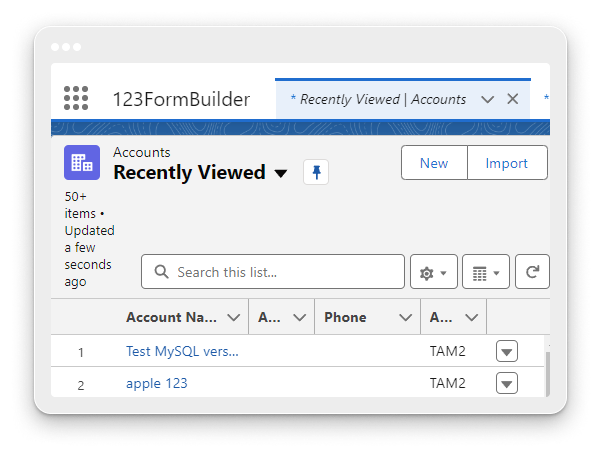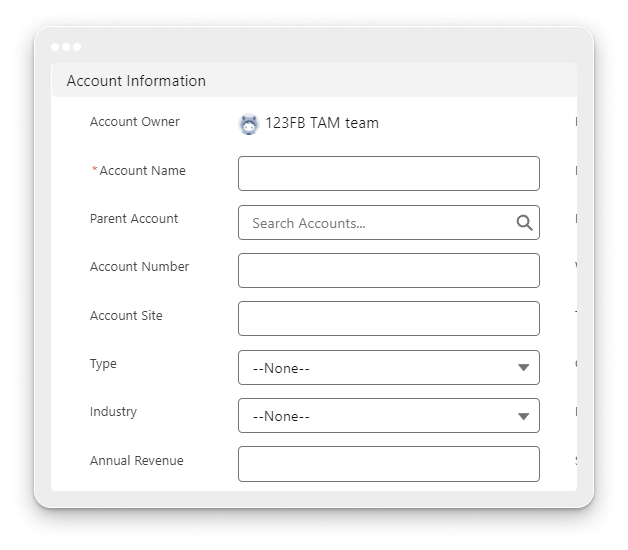What are standard objects in Salesforce?
In the realm of Salesforce, standard objects play a pivotal role in organizing and managing data within the platform. These predefined data structures serve as the foundation for handling a myriad of information types seamlessly. From tracking potential customers to managing customer inquiries and sales opportunities, standard objects form the bedrock of Salesforce functionality.
In this article, we’ll delve into the world of standard objects in Salesforce, exploring their significance, common types, and how they contribute to streamlining business processes. Additionally, we’ll discuss the process of creating records within Salesforce objects and introduce a powerful tool, 123FormBuilder, that enhances data input efficiency by seamlessly integrating web forms with Salesforce objects.
Common standard objects in Salesforce
- Account (representing organizations or individuals you engage with)
- Contact (people associated with specific accounts)
- Lead (potential customers)
- Opportunity (potential sales deals)
- Case (customer issues or problems).
Let’s look at an example. A sales team might use Salesforce to track potential customers (Leads) and their interactions, convert Leads into sales opportunities (Opportunities) associated with specific organizations (Accounts), manage customer inquiries or issues (Cases), and keep track of sales representatives (Users) responsible for handling these tasks.
Within these objects, records are the individual data entries that capture specific details related to the object’s purpose or function. For example, in the Accounts’ object, records represent different companies. In the Contacts object, records represent individual persons associated with those companies.
Specific details about a record can be gathered through fields. Fields capture details about the entity represented by the record.
Here’s a simple breakdown:
- Objects are containers for organizing data in Salesforce.
- Records are individual entries of data stored within objects.
For instance, an Account record represents one company, while a Contact record represents one person.
- Fields are the specific pieces of information stored within records. Examples of fields include Name, Email, Phone Number, and Address.
Process of Creating Records in Salesforce
In order to add a new record, go to your Object’s tab and click the New button on the right side.

A new window will appear where you can type in the details about a record:

Enter the details into the fields, then click on “Save” to store the information.
Feed data into any Salesforce object with 123FormBuilder
Experience the power of 123FormBuilder, where you can effortlessly build forms that seamlessly generate or revise records within Salesforce. Share or publish these forms directly on your website. Whether you’re generating leads, contacts, cases, or opportunities, you have the flexibility to align the data collected with your 123FormBuilder forms to any Salesforce object.
Simply select your Salesforce Object and seamlessly map your Salesforce fields with the corresponding fields on your form.

Following this straightforward setup, you’ll be generating records using your webforms effortlessly, without any manual intervention.
The 123FormBuilder app can be installed directly from Salesforce AppExchange, streamlining your workflow by centralizing all tasks within a single platform.

Conclusion
In conclusion, standard objects in Salesforce play a fundamental role in organizing and managing data within the platform. From Accounts to Opportunities and Cases, these pre-defined structures serve as the foundation for various business processes.
With the ability to create and update records seamlessly using 123FormBuilder, businesses can streamline their data collection process and integrate it directly into Salesforce. By simplifying the workflow and consolidating tasks into one platform, organizations can enhance efficiency and productivity in managing their data within Salesforce.
Load more...